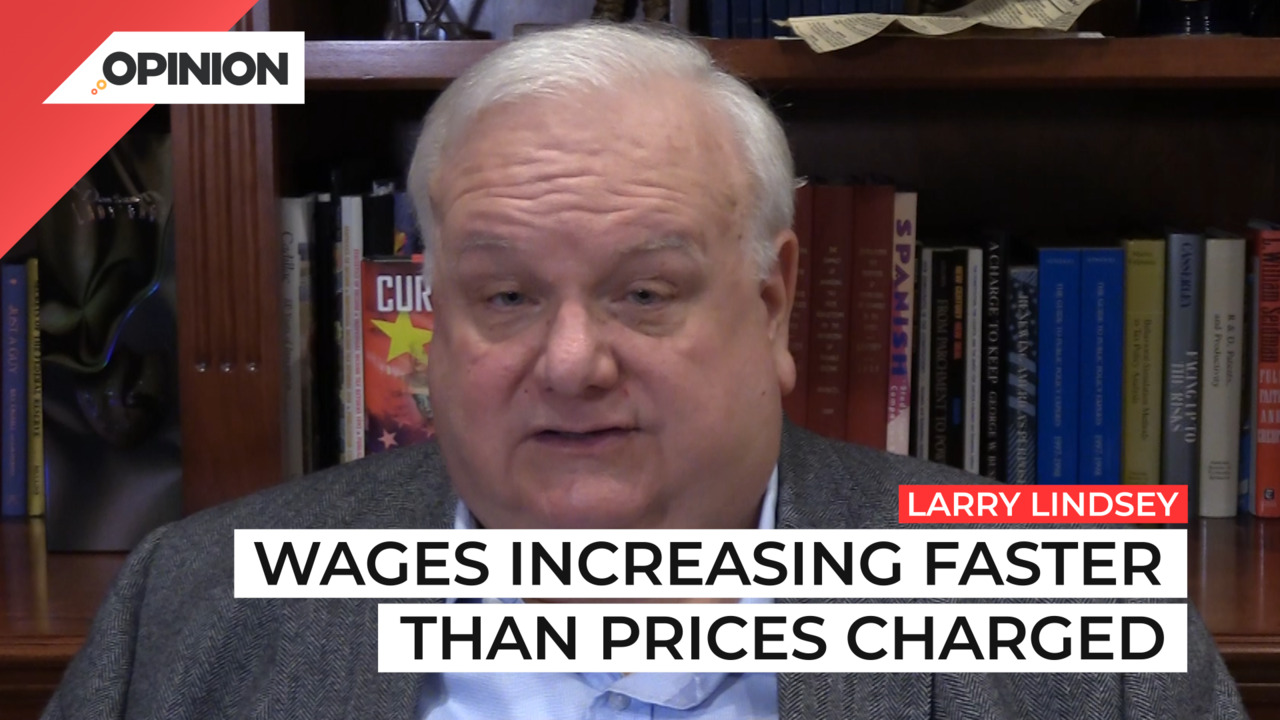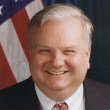
Commentary
-
Our commentary partners will help you reach your own conclusions on complex topics.
Last week, Federal Reserve Board Chairman, Jay Powell, gave a much anticipated speech on how he saw economic conditions. Markets had been hoping that the relatively small reductions in inflation that we’d seen would prompt the Fed to stop hiking. Numerous Fed speakers went out there and said, no, they still have a lot of work to do. And so by the way, did Powell. Unfortunately, Powell’s speech didn’t really stress that point. He began with two pieces of good news, first on housing, and secondly, on the cost of goods. While inflation continues to rise, the overall rate of inflation in housing, both owner-occupied housing and rents, has been coming down. Why is that? The answer is, it rose to levels that were just simply unsustainable. We earlier this year had housing inflation of 18%. Sorry, things can’t go up 18% in a year when workers aren’t making that much more. So we’re seeing a backing off of the inflation rate.
And in some cases, house prices are falling. Now, they’re not going to go back to where they used to be. But the rate of increase has declined. Good news for the overall inflation number.
Something similar is happening in the market for goods, things like automobiles or appliances. Those prices also have been moderating quite a bit. Why? Well, again, they were pushed up to stratospheric levels, because of supply chain issues caused in part by COVID. And the lockdowns that followed. Well, those supply chain issues are being mitigated. And so the over expansion, extension of goods prices, is now backing off to something more moderate, also disinflation. True. This is good news. It’s going to be good news next year. But then Powell, in the second half of his speech, said the third big component of what people buy, which is services, still has problems ahead.
You see, a service is largely driven by the cost of labor providing service, and we still have significant labor inflation wage inflation in the economy. Now let’s face it, no one’s going to complain about getting higher pay. But the fact is, pay is going up, the cost of what you’re paid to do has to go up as well, when it’s sold to the consumer, or the company goes out of business.
The employment report, which came out on Friday of last week, really showed this problem very starkly. For example, if you look, overall, the wage rate wage inflation rate, right, it was going up, went up just 2.8% in goods producing industries. But in the roughly 75% of the economy, that is services, wages went up at an annual rate of 8%. And if you look at what are called production and nonsupervisory workers, meaning not the supervisor online, but the person who works on the assembly line or, you know, basic those basic work, t was even greater goods inflation for wages was 4.3%. For services, it was 9.4%. Well think about that.
The cost of hiring people that you can name is anything from a doctor’s office to McDonald’s is going up at 9.4%. Then, prices that those businesses have to charge have to go up pretty close to the same amount, but chances of getting disinflation lower inflation just aren’t there. And deeper in the numbers that got even worse. For example, the number of teenagers working Rose 149,000. The number of people 45, and older working declined 271,000. Well, that’s a lot of trouble, because the older workers are also more experienced workers. Not only that, older workers tend to get paid more than teenagers. And so if you see more teenagers and fewer older workers, if anything than average wages should have been going down, not up. Instead, they went way up. So you have a problem. Another problem for the companies, and that is experiences declining. And they have to have other costs, particularly training costs to handle all the new, younger workers.
This puts enormous pressure on the cost side of production. It also puts problems on the demand side. In the last six months, wages have been going up at an annual rate of 7%. You know, good for us bad for inflation. Because if wages are going up at 7%, we can buy 7% more.
And if the companies are only able to produce say 2% More, it means it’s going to difference is going to be made up in 5% inflation, way above what the Feds target is. So the Fed has a lot more work to do.
It’s probably going to be raising interest rates 50 basis points ie half a percentage point and its December meeting, and probably will have to 25 basis point quarter percentage point hikes next year, bringing the Fed funds rate to 5%. This is bad news for stocks. First of all, companies are going to see a profit squeeze. After all, it means wages are still going to be going up more than prices they charge. And secondly, when interest rates are higher, stocks become less attractive, and people are more attracted to say buy bonds or put their money in a savings account.
The labor market remains key to America fighting its inflation problem. Unfortunately, that fight is far from over. And 2023 is going to be a very difficult year. This is Larry Lindsey for Straight Arrow News.
-
Election 2024 will boil down to the Great Lakes states
Pollsters and pundits have been engaged in a long debate about how Biden or Trump might win the 2024 election, with much of their focus spent on the “swing state” electoral battlegrounds. While the winners of Alabama or California may be obvious, for instance, who wins Pennsylvania is a more difficult question. Watch the above…
-
Why the Fed should consider Theory of Reflexivity when fixing policy
The Theory of Reflexivity, often used in the context of economics and financial markets, implies that investors don’t base their decisions on reality but on their perceptions of reality. This creates a feedback loop where investors’ perceptions influence economic fundamentals, which in turn alter investor perceptions. Watch the above video as Straight Arrow News contributor…
-
Federal Reserve surpassed its own wildest expectations
On May 14, the U.S. Bureau of Labor Statistics released the most current producer price index (PPI) report, which showed an increase of 0.5% month-over-month in April. After the report’s release, U.S. Federal Reserve chairman Jerome “Jay” Powell said that while he believes the current policy rate is restrictive by many measures, the Fed needs…
-
Polls give slight advantage to Trump in Electoral College
With the U.S. general election only six months away, leading candidates President Joe Biden and former President Donald Trump appear to be engaged in a very close contest. In their 2020 race, the winner of the Electoral College was ultimately determined by a relative handful of voters in just a few swing states, even though…
-
College sports is big money but not everyone benefits
March Madness has wrapped up and Caitlin Clark has emerged as a household name as well as a wealthy student athlete. Earning over $3 million throughout her college career, her success stands in stark contrast to the previous notion that collegiate athletes shouldn’t earn anything beyond their scholarship. Straight Arrow News contributor Larry Lindsey examines…
Latest Opinions
-
 U.S. Department of Defense
U.S. Department of Defense
Congress still trying to figure out how to reduce wasteful military spending
-
 DVIDS
DVIDS
US Navy, Air Force making waves with new weapons at RIMPAC
-
 Getty Images
Getty Images
Israeli PM Netanyahu meets with Trump at Mar-a-Lago
-
 Getty Images
Getty Images
Growing US nuclear power resurgence reaches the nation’s heartland
-
 Getty Images
Getty Images
Beer from the sun, other solar thermal projects get government funding
Popular Opinions
-
In addition to the facts, we believe it’s vital to hear perspectives from all sides of the political spectrum.


